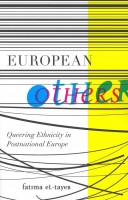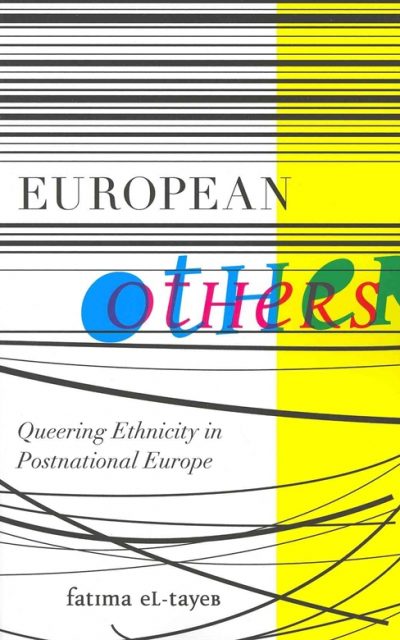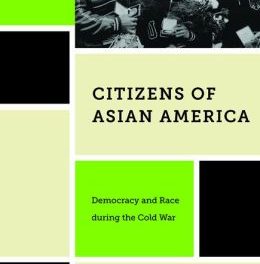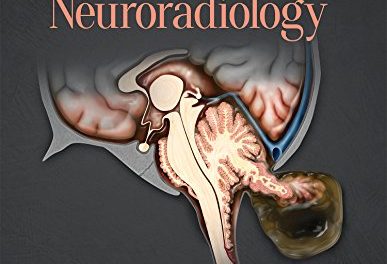 Author: Fatema el-Tayeb
Author: Fatema el-Tayeb
Publisher: University of Minnesota Press
Book Review by: Paiso Jamakar
This book has an unusual title and one that is not easy to comprehend. Who are “European others”? Did the author mean to say “other Europeans”?
Another word from the book’s subtitle – “queering” – is not to be found in the Merriam-Webster dictionary, or in any known or recognized dictionary.
Most of us know that a “queer” is derogatory term for a gay man or a homosexual. But the word queering, used as a verb I suppose, was not to be found anywhere in a search on Google, except in one instance, but that has no reference to gay men at all.
What we found as one meaning of “queering” was: spoiling or ruining (an agreement, event, or situation) and in a second instance it took us to an article entitled Why Men Fall in Love: 9 Powerful Words You Can Say That Remind Him Why He Needs You.
We also tried to find the meaning of the phrase “queering ethnicity” (shown on this book’s cover) in a thesaurus, but found none.
I feared that this book was going to be difficult to understand. With such new and unusual words on the cover, will I find other difficult or unusual words and phrases in the inside pages?
On the first page of the Introduction, I found the Dutch word straattal. Fortunately, the author wrote that it was the Dutch version of American slang, and multicultural youth groups use it, particularly in Damsko, Amsterdam and that this street language has words from a Surinamese language – Sranantongo – and Moroccan.
I thought there would be rougher plodding for me, so I decided to immediately find the central theme and larger scope of this book in the author’s own words. And I suppose this is it, according to the author Fatema el-Tayeb:
“It is a book thus that addresses issues of race, identity and resistance, focusing on a group largely invisible in popular as well as academic discourses, namely Europeans of color.”
She points out that ‘Europeans of color’ has no claim to ‘scientific precision’ but that ‘of color’ and ‘Europeans’ require to be clarified and that she will do her best to be exact in her use of these terms in her book, because they are central to her study.
Fatema el-Tayeb explains out that when she refers to Europeans, she means people living west of the Ural Mountains. Continental Europe is her geographical focus. I suppose (but am not sure) that most of the Europeans living in that area are White.
She writes that “all parts of Europe are arguably invested in ‘whiteness’ as the norm against which ethnicization is read as a tool of differentiation between insiders and outsiders; in fact that this is so, is in fact one of the key claims of this book.”
Writers, especially book authors and imperatively, journalists, know that a claim has to have a basis in demonstrable facts, and strong support through solid evidence. She points out that “both Eastern and Southern Europe’s claim to this whiteness is more ambiguous than that of the Northwest of the continent.”
This book contributes to scholarship in a new area of ethnic studies: in Europe. It covers new ground by looking at how non-white and other Europeans are coping with their daily challenges and pressures from white Europeans, taking into account the fact that their cultures, languages, religions, languages and traditions are vastly different from indigenous (or may we call them ‘original’) Europeans.







